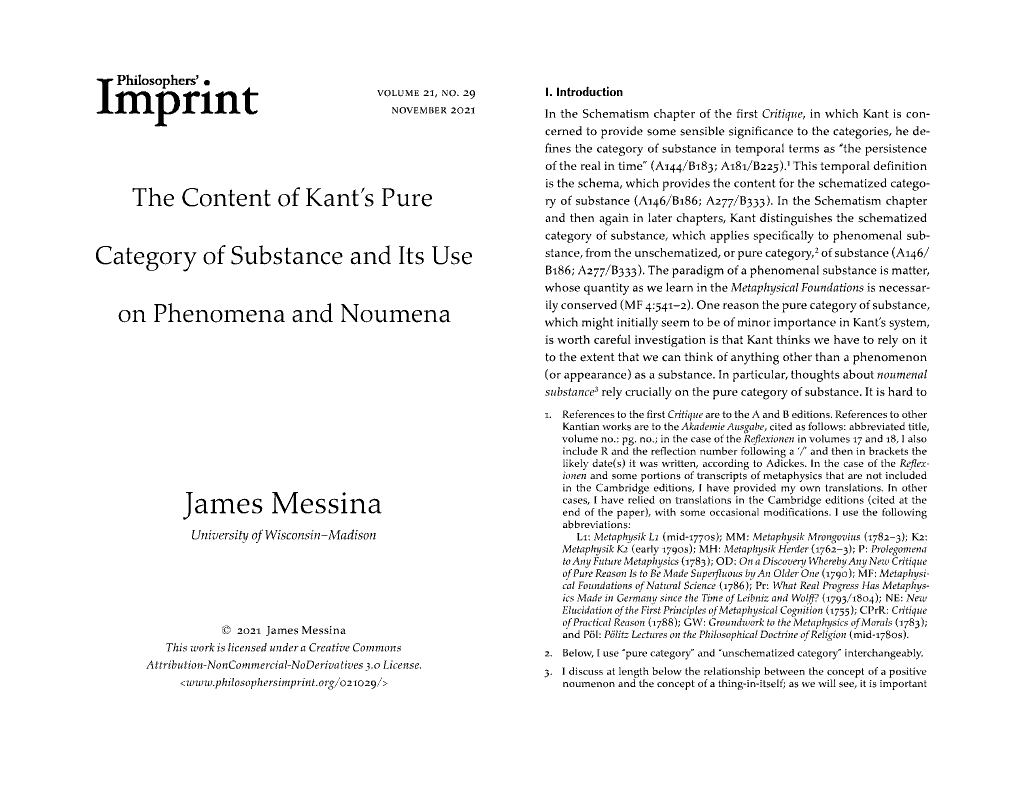The Content of Kant's Pure Category of Substance and Its Use on Phenomena and Noumena
Skip other details (including permanent urls, DOI, citation information): This work is licensed under a Creative Commons Attribution-NonCommercial-NoDerivatives 4.0 International License. Please contact [email protected] to use this work in a way not covered by the license.
For more information, read Michigan Publishing's access and usage policy.
Abstract
I begin by arguing that, for Kant, the pure category of substance has both a general content that is in play whenever we think of any entity as a substance (I call this the Subsistence-Power Conception of substance) as well as a more specific content that arises in conjunction with the thought of what Kant calls a positive noumenon (I call this the Inner-Simple Conception of substance). Drawing on this new “Dual Content” account of the pure category of substance, I offer new answers to two contested questions: What is the relation of the pure category to phenomenal substance? What, if any, epistemic gains can we achieve when we apply the pure category to noumena? Regarding the first question, I argue that while phenomenal substance does not qualify as a substance according to the Inner-Simple Conception, it does qualify as one according to the Subsistence-Power Conception. Regarding the second question, I argue that, in the case of the substantiality of positive noumena, Kant’s account allows for justified conditional beliefs involving the Inner-Simple Conception. In the case of negative noumena, it allows for justified existential beliefs involving the Subsistence-Power Conception.



